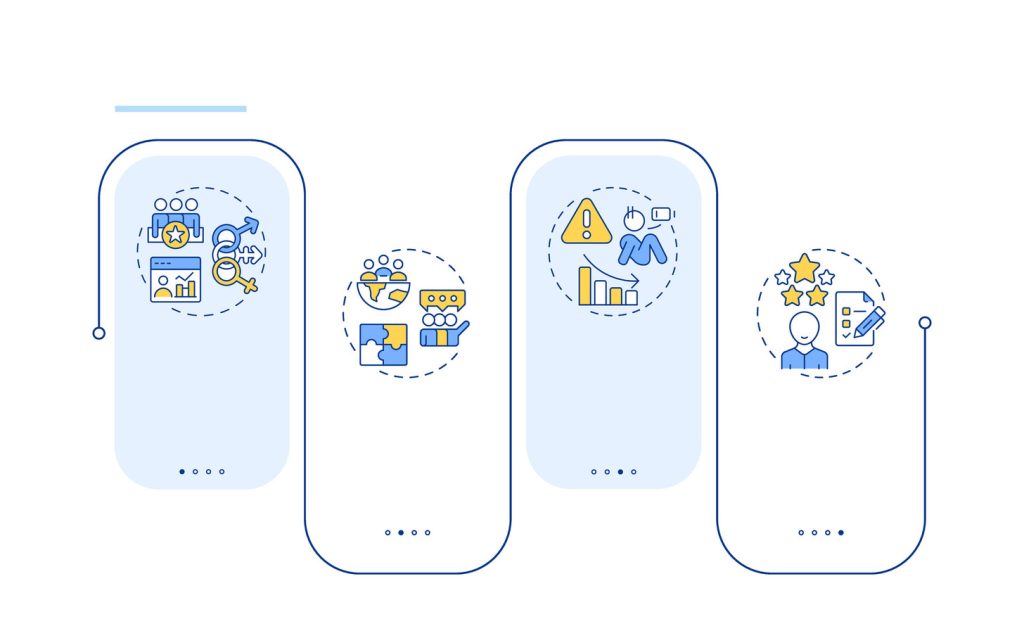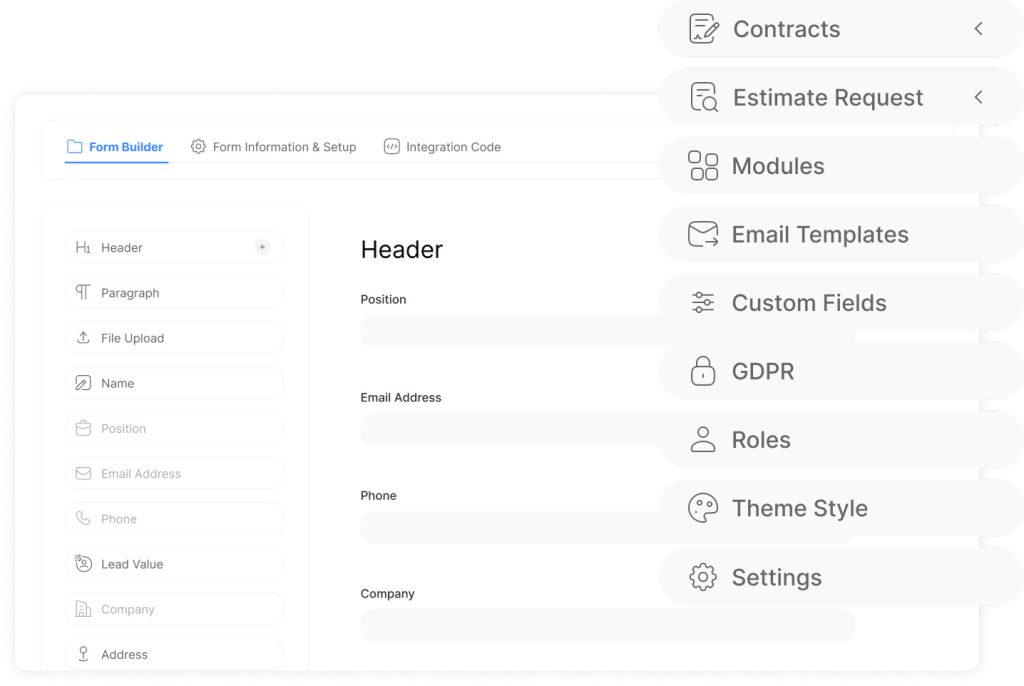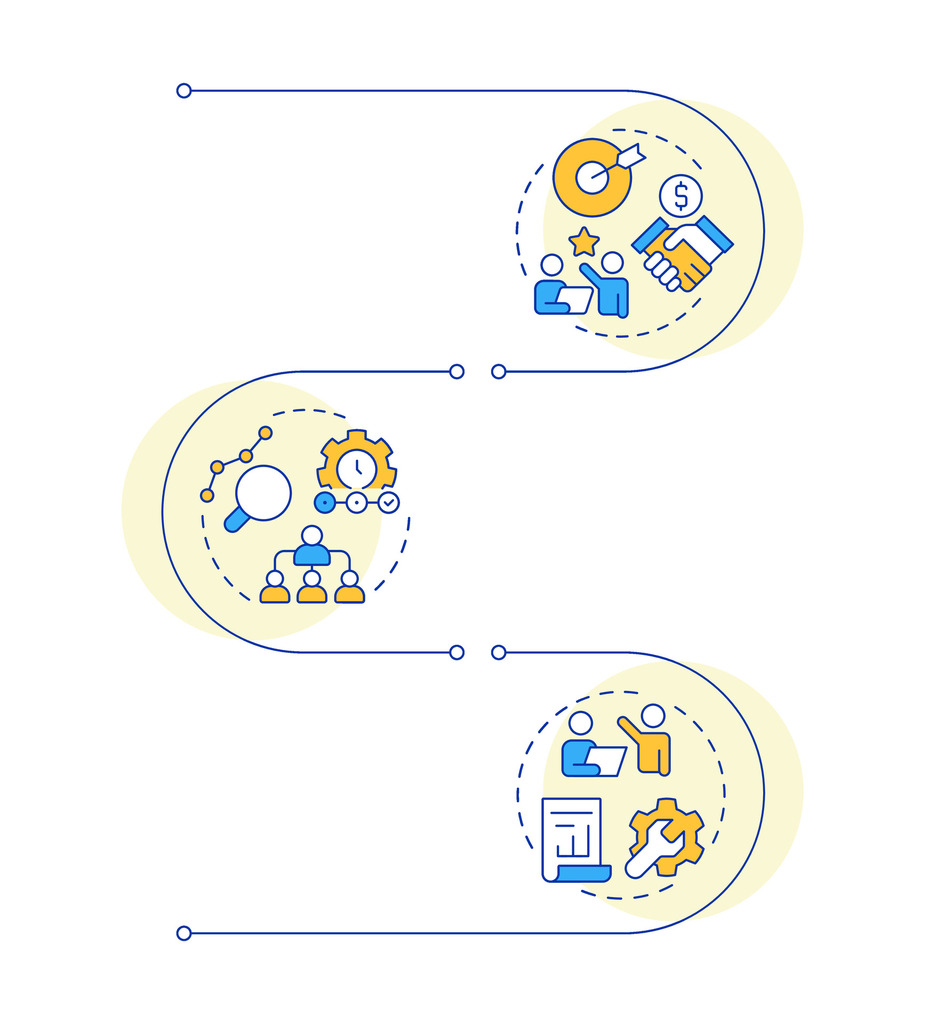Mastering Custom Stages: The Ultimate Guide for Businesses

Modern organizations need workflow systems that bend to their needs, not the other way around. Traditional one-size-fits-all approaches often fail to address unique operational demands or shifting customer expectations. This is where bespoke process design shines, offering a blueprint for aligning workflows with specific business goals.
The concept mirrors gaming environments where creators build rule-based worlds to achieve defined objectives. Applied to business, this approach lets teams construct frameworks that mirror real-world challenges. Companies can define clear progression paths, set performance benchmarks, and adapt processes at every level.
Adopting tailored workflows drives three critical advantages: operational clarity, reduced resource waste, and enhanced client interactions. Leaders who implement these systems often see faster decision cycles and improved cross-team coordination. The method turns static procedures into dynamic tools that evolve with market changes.
This guide reveals how to architect workflows that deliver measurable outcomes. It provides actionable strategies for mapping processes to organizational priorities while maintaining flexibility. Businesses that master this technique position themselves to outpace competitors through smarter resource allocation and responsive service models.
Key Takeaways
- Tailored workflows address unique business needs better than generic solutions
- Process design inspired by gaming mechanics boosts engagement and efficiency
- Clear stage progression improves team accountability and performance tracking
- Adaptive frameworks reduce operational costs by eliminating redundant tasks
- Strategic workflow design enhances customer experiences at critical touchpoints
Overview of Custom Stages in Modern Business

Modern enterprises thrive by designing frameworks that mirror their operational realities. These bespoke process components act as specialized tools for addressing unique challenges while maintaining strategic alignment. Unlike rigid templates, they adapt to shifting customer expectations and market demands.
“Businesses that implement adaptable systems see 23% faster decision-making cycles,” notes a 2023 McKinsey operations report.
Tailored systems guide users through structured sequences of interactions and outcomes. For example:
- E-commerce platforms directing buyers from discovery to checkout
- Service providers mapping client onboarding journeys
- Manufacturers optimizing quality control checkpoints
| Traditional Approach | Tailored Framework | Impact |
|---|---|---|
| Fixed procedures | Adaptive pathways | +34% process flexibility |
| Generic interactions | Personalized experiences | 19% higher satisfaction |
| Static resource allocation | Dynamic task management | 28% cost reduction |
Leading organizations use these frameworks to balance consistency with personalization. A retail platform might create distinct engagement paths for first-time buyers versus loyal customers. This strategic approach reduces redundant tasks while improving team coordination.
Implementation requires three key steps:
- Analyzing existing operational patterns
- Identifying critical decision points
- Designing responsive interaction sequences
Companies report measurable improvements within six months of deployment. Service teams achieve faster resolution times, while sales departments shorten conversion cycles. The method proves particularly effective in industries requiring rapid adaptation to regulatory changes or consumer trends.
The Evolution of Stage Building from Gaming to Business Applications
Gaming innovations transformed how industries approach problem-solving. The stage builder concept, popularized by titles like Super Smash Bros., introduced tools for designing interactive environments with layered functionality. These gaming platforms allowed players to manipulate terrain, set rules, and choose backgrounds – principles now driving modern business solutions.
“User-generated design tools increase engagement by 41% compared to static systems,” states a 2023 Gartner analysis of interactive platforms.
Early gaming builders used grid-based layouts, limiting creative freedom. Modern iterations like Super Smash Bros. Ultimate revolutionized creation through freehand drawing and multi-layer editing. Business tools adopted these concepts to build:
- Customer journey maps with adjustable difficulty levels
- Training modules using conditional logic gates
- Workflow systems with dynamic resource placement
| Gaming Feature | Business Application | Impact |
|---|---|---|
| Decorative layers | Workflow prioritization | 27% faster task completion |
| Interactive screens | Client portals | 33% higher user retention |
| Physics engines | Process simulation | 19% error reduction |
Leading platforms now incorporate gaming-inspired elements like progress tracking and achievement levels. A financial services firm recently redesigned client onboarding using tiered objectives – mirroring gaming’s reward systems. This approach cut training time by 22% while improving compliance rates.
The transition maintains core design principles while adding measurable outcomes. Adaptive backgrounds in gaming became customizable interface themes in business software. Rule-setting mechanics evolved into automated workflow triggers. These innovations prove engaging design drives both adoption rates and operational precision.
How Custom Stages Enhance Business Efficiency

Operational excellence demands systems that adapt as quickly as market conditions change. Tailored workflow platforms eliminate bottlenecks by guiding teams through optimized action sequences. This approach reduces redundant tasks while accelerating critical decisions.
“Companies using adaptive workflow tools achieve 38% faster process completion than those relying on static methods,” reports Forrester’s 2024 Operational Efficiency Study.
Structured environments in these platforms provide clear direction for complex tasks. Employees follow predefined pathways that adjust based on real-time data inputs. This intelligent routing ensures each user receives tools matching their role and objectives.
| Traditional Approach | Tailored System | Efficiency Impact |
|---|---|---|
| Manual task assignment | Automated role-based routing | 40% fewer manual interventions |
| Generic training materials | Contextual guidance systems | 31% faster onboarding |
| Fixed resource allocation | Dynamic scaling capabilities | 27% cost savings at peak demand |
Intelligent automation within these platforms triggers actions based on user behavior and system conditions. A manufacturing client reduced quality checks by 18% while maintaining standards through smart defect detection rules. Service teams using this conditional logic resolve tickets 22% faster.
Scalability becomes achievable through modular design principles. Organizations handle 300% more transactions without proportional staffing increases. This way of working future-proofs operations against market shifts and growth spurts.
Strategic Benefits of Custom Stage Creation for Customer Relationships
Forward-thinking companies now prioritize relationship architecture over static transaction models. Tailored interaction platforms transform how businesses nurture client connections through data-driven journey mapping. A 2024 Salesforce study found brands using adaptive systems achieve 47% higher customer retention than competitors.
These systems excel at behavioral segmentation. Businesses categorize clients by purchase history, engagement level, and communication preferences. A luxury retailer might design distinct pathways for occasional buyers versus VIP collectors. This precision drives 32% higher conversion rates in targeted campaigns.
“Personalized journey design increases customer lifetime value by 63% compared to generic approaches,” states Forrester’s CX Innovation Report.
| Traditional CRM | Tailored Approach | Business Impact |
|---|---|---|
| Mass email blasts | Behavior-triggered messaging | 41% open rate increase |
| Fixed loyalty programs | Tiered reward levels | 28% repeat purchase boost |
| Manual follow-ups | Automated nurture sequences | 19% staff time savings |
Intelligent platforms maintain human connections through strategic touchpoints. A financial services firm automated routine updates but reserved personal calls for high-value clients. This hybrid model improved satisfaction scores by 35% while scaling operations.
Analytics tools within these systems reveal hidden patterns. Teams track drop-off points in onboarding flows or popular features at each engagement level. One SaaS company redesigned its trial experience using these insights, achieving 22% faster conversion cycles.
The ultimate advantage lies in adaptable relationship building. Businesses modify interaction sequences without overhauling entire systems. This agility proves critical when responding to market shifts or new consumer trends.
Design Principles for Impactful Custom Stages
Effective workflow design combines structure with adaptability. Businesses achieve this balance through six core principles proven to enhance user engagement and operational precision.
User flow optimization guides individuals through intentional pathways. Each interaction point must serve clear objectives, avoiding unnecessary complexity. A logistics company redesigned shipment tracking this way, reducing customer inquiries by 41%.
Visual hierarchy directs attention using color contrast and spatial organization. Strategic placement of key elements – like call-to-action buttons – improves navigation efficiency. Research shows properly structured interfaces boost task completion rates by 33%.
“Progressive disclosure prevents decision fatigue while maintaining challenge-reward balance,” explains a MIT Sloan Management Review analysis of digital systems.
Consistency builds trust through standardized patterns. Unified terminology and interaction methods across platforms reduce training time by 28%. Accessibility integration ensures all users navigate systems effectively, regardless of ability.
Modern tools incorporate physics-inspired attributes. Materials with adjustable gravity settings create intuitive interfaces mirroring real-world interactions. Terrain textures now function as universal elements, enabling seamless background transitions across devices.
Continuous testing drives improvement. Teams using iterative design cycles report 19% faster error resolution. Performance analytics reveal friction points, allowing precise edit adjustments to workflow sequences.
Integrating Custom Stages into Digital Workflows

Digital ecosystems thrive when specialized components merge seamlessly with existing operations. Successful implementation begins with process mapping to identify where tailored solutions add maximum value. Teams should analyze workflow patterns to pinpoint bottlenecks that benefit from adaptive enhancements.
API connectivity acts as the backbone for these integrations. Modern platforms sync with CRM tools and analytics systems through standardized interfaces. This interoperability ensures real-time data flows between departments while maintaining security protocols.
“Organizations using API-driven integrations reduce implementation time by 37% compared to manual coding,” states a 2024 Gartner report on digital ecosystems.
Cloud-based solutions address scalability challenges effectively. Remote teams access unified interfaces across devices, maintaining consistency in multi-location operations. Key advantages include:
- Automatic software updates without workflow disruption
- Role-based access controls for sensitive data
- Real-time collaboration features for distributed teams
| Traditional Systems | Integrated Approach | Improvement |
|---|---|---|
| Isolated databases | Centralized data lakes | 29% faster reporting |
| Manual error checks | Automated validation rules | 43% fewer mistakes |
Change management proves critical during rollout. Successful adopters use phased implementations paired with interactive training modules. Performance dashboards track adoption rates and identify teams needing additional support.
Security remains non-negotiable. Enterprise-grade encryption and multi-factor authentication protect sensitive workflows without sacrificing functionality. Regular audits ensure compliance as regulations evolve.
Utilizing the Stage Builder for Custom Stages
Businesses gain operational precision through architectural components that balance structure with creative freedom. Modern stage builder tools enable teams to construct tailored environments using modular elements. These systems maintain functional integrity while allowing personalized configurations.
Understanding Stage Components and Framework Rules
Effective stage design requires mastery of three core part categories:
| Component Type | Function | Examples |
|---|---|---|
| Structural | Defines workflow boundaries | Walls, platforms |
| Interactive | Enables user actions | Buttons, forms |
| Decorative | Enhances visual context | Branded elements |
Stage size directly impacts operational capacity. Small configurations (10×8 grid) suit focused tasks, while large setups (18×14 grid) handle complex processes. All versions share an 8,000-unit capacity limit for optimal performance.
“Grid-based design reduces configuration errors by 29% compared to freeform systems,” states a 2024 TechRepublic analysis of workflow tools.
Mastering Design Techniques and Modifications
Strategic layering separates functional elements from visual backgrounds. Foreground components drive user interactions, while rear layers maintain brand consistency. This approach keeps interfaces uncluttered yet visually engaging.
Real-time edit capabilities let teams adjust live stage elements without disrupting operations. A retail company improved checkout flows by modifying payment gateways during peak hours, reducing cart abandonment by 17%.
| Stage Size | Grid Dimensions | Max Components |
|---|---|---|
| Small | 10×8 | 42 elements |
| Medium | 14×11 | 68 elements |
| Large | 18×14 | 94 elements |
Theme integration ensures cohesive experiences across platforms. Financial institutions using branded color schemes report 23% higher user trust scores. These visual cues reinforce professionalism while maintaining functional clarity.
Real-World Applications and Use Cases of Custom Stages
Innovative organizations are reimagining routine operations through interactive design principles borrowed from gaming. These solutions turn everyday tasks into strategic opportunities, driving measurable improvements in engagement and outcomes.
Incorporating Gaming Inspirations into Business Models
Progression mechanics create natural momentum in workflows. A telecom company redesigned its service platforms using tiered achievement levels, resulting in 29% faster issue resolution. Employees unlock advanced tools as they demonstrate competency, mirroring gaming’s reward structures.
“Systems with embedded progression mechanics see 51% higher user retention than traditional interfaces,” notes a 2024 PwC workforce technology study.
Examples of Effective Implementations
The Skyworld case study demonstrates transforming mundane processes. By adding interactive checkpoints to a generic procurement system, a manufacturer reduced approval times by 37%. Key features included:
- Visual progress trackers for complex workflows
- Role-specific challenge levels
- Automated milestone celebrations
Retail platforms now use Jungle-inspired navigation for warehouse management. Workers follow optimized paths revealed through completed tasks, similar to unlocking game map sections. This approach cut training hours by 44% while improving inventory accuracy.
| Industry | Gaming Element | Outcome |
|---|---|---|
| Healthcare | Quest-based training | 31% faster compliance |
| Finance | Leaderboard integrations | 26% sales increase |
Optimizing Customer Engagement Through Interactive Stages

Importantly, today’s customers expect more than static interfaces—they crave participation and instant feedback. Consequently, interactive stages transform passive browsing into dynamic journeys where users shape outcomes through exploration. As a result, this approach turns routine interactions into memorable experiences that build brand loyalty.
To begin with, strategic placement of touchpoints drives engagement. Moreover, immediate value delivery at each interaction level creates positive reinforcement loops. Notably, users spend 22% longer on platforms with this design, according to 2024 UX studies. Ultimately, conversion rates climb as participants feel invested in the process.
Consistency across devices proves critical. Responsive stages adapt to any screen size while maintaining core functionality. Whether on mobile or desktop, customers enjoy unified experiences that reduce friction.
Businesses that master this method win the battle for attention in crowded markets. They create pathways where every click moves customers closer to solutions, fostering trust and driving sustainable growth.

